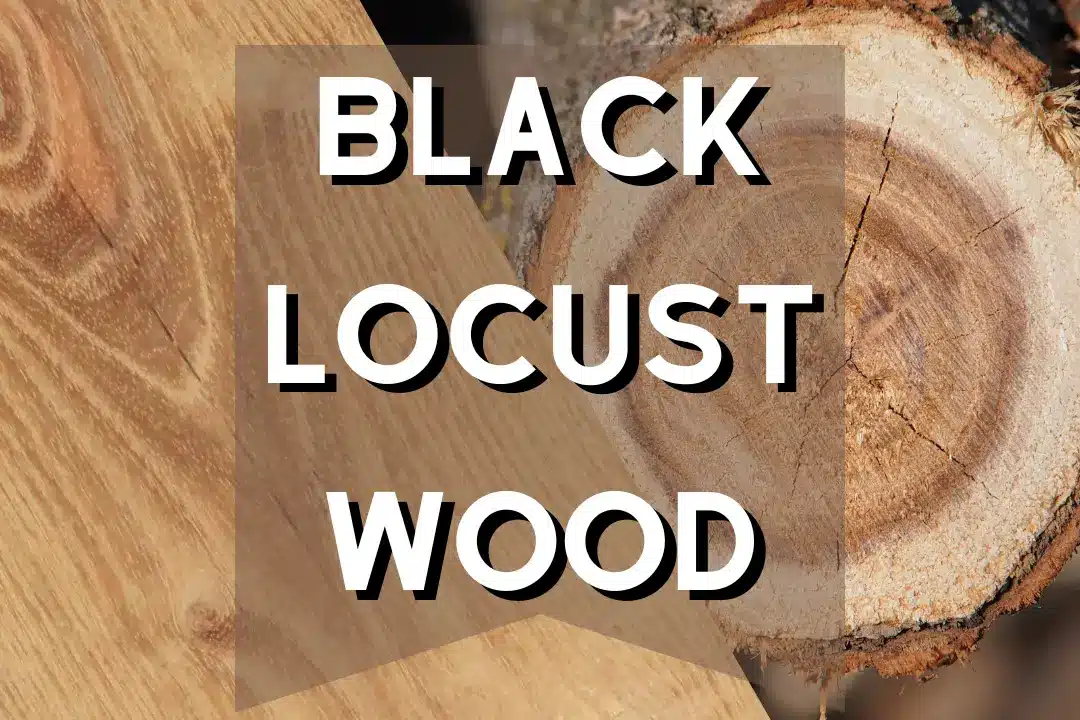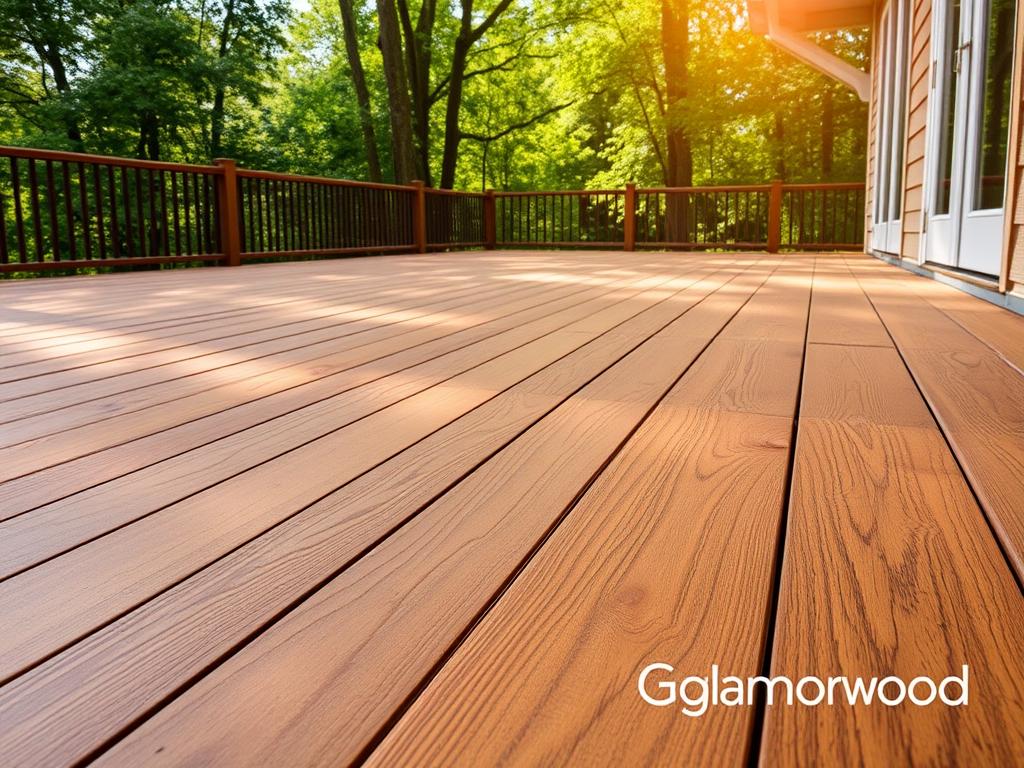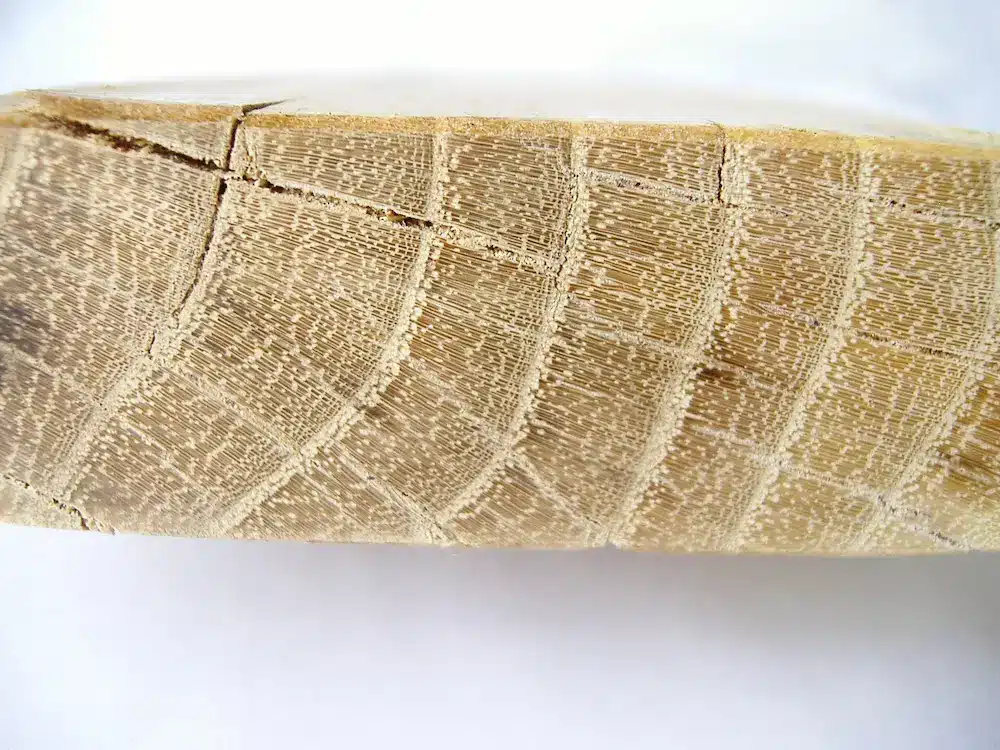
Why Black Locust Wood Is a Smart Choice – 10 Facts

Did you know black locust wood can last decades in harsh outdoor conditions? Because of its strength, it’s a top pick for outdoor projects. The wood comes from the black locust tree and is both durable and beautiful.
It’s also good for the planet because it is resistant to decay and insects. This means less upkeep and fewer chemicals. Plus, it’s easy to find worldwide, making it a great choice for building.
Table of Contents
ًWhat is Black Locust Wood
Black locust wood comes from the Robinia pseudoacacia tree. This tree grows fast and can reach 40 to 100 feet tall. It spreads 20 to 35 feet wide.
The leaves have 7 to 19 leaflets and are a rich green color. They turn yellow in the fall. The tree’s flowers are fragrant and hang in racemes, attracting bees.
Black locust wood is known for its durability. It resists decay and rots well. This makes it great for outdoor use, like decking and furniture.
Its Janka hardness rating is about 1,700 lbf. This is one of the highest in North America, even higher than many oaks.
Black locust trees also help the soil. They fix nitrogen, making crops grow better. Their roots stabilize the soil, help with carbon sequestration, and prevent erosion.
This makes black locust wood a sustainable choice. It’s valuable for both its beauty and its benefits to the environment.
Exceptional Durability
Black locust wood is known for its amazing durability. It’s a top pick for outdoor projects. Its natural qualities mean it lasts long and needs little upkeep.
Resistance to Decay
This wood is famous for fighting off decay. It’s almost as good as tropical hardwoods in looks and lasting power. Black locust is one of the most rot-resistant woods in North America.
Unlike untreated woods, black locust lasts much longer. It’s great for outdoor use because it can handle harsh weather.
Insect Resistance
Black locust wood is also insect resistant. It keeps termites and beetles at bay, keeping structures strong. This makes it perfect for the outdoors, without needing harmful chemicals.
Strength Comparison with Oak
Black locust wood is as strong as oak. It has a Janka hardness of 1,700 lbf, making it strong for heavy projects. Its modulus of rupture is 19,400 lbf/in², ideal for tough spots.
Black locust meets and often beats expectations for strength. It’s a top choice for those who need a reliable material.
Sustainability of Black Locust Wood
Black locust wood is a top pick for those who care about the planet. It comes from trees that grow fast and can be replanted easily. This makes it a great choice for building with wood that’s good for the environment.
Fast Growth Rate
The black locust tree grows fast, up to 91 to 122 cm each year. This quick growth means we can harvest wood more often. It also shows that black locust is a smart choice for forests.
These trees can grow to maturity in just a few decades. This is much faster than traditional hardwoods, which take centuries to grow. This fast growth helps keep forests healthy and wood supplies steady.
Renewable Timber Source
Black locust is a great choice because it can be harvested without killing the tree. This method keeps the tree alive and helps wood supplies stay consistent. It also helps protect endangered rainforest hardwoods from harmful logging.
Choosing black locust wood supports green building efforts. It helps reduce the environmental impact of building materials. This is good for our planet.
Black Locust Wood in Outdoor Applications
Locust timber is great for outdoor use. It’s strong and lasts long, perfecting looks and function. Its rot-resistant quality makes it ideal for tough outdoor spots.
Ideal Use for Decking
Black locust is perfect for decking. It lasts over 30 years, beating out pressure-treated pine’s 10 years. Its water-resistant nature keeps decks strong, even in rainy areas.
Popular Choice for Fencing
Black locust lumber is also great for fencing. It’s strong and doesn’t rot, making it a top pick for lasting fences. It’s a solid choice for those wanting durable fencing.
Usage in Landscaping Projects
In landscaping, black locust is versatile. It’s used in boardwalks, garden features, and outdoor seating. Its natural beauty and durability make it a standout choice for outdoor projects.

The Beauty of Black Locust Wood
Black locust wood is a favorite among those who love natural materials. It comes in various natural wood colors, from soft beige to deep, rich tones. As it ages, it develops a silvery patina that makes it even more beautiful.
Aesthetic Appeal of Natural Wood
The aesthetic black locust wood is known for its stunning looks. It has various wood grain patterns, making each piece unique. The natural imperfections and swirling grain add depth and character, perfect for furniture, flooring, and decor.
Color and Grain Variations
Black locust wood has an interesting range of colors. It starts as a light beige and darkens with age. The wood grain patterns add to its beauty and show its natural origins. It’s a favorite among craftsmen and designers for its versatility in styles.
The Benefits of Using Black Locust Wood
locust timber offers many advantages, making it a great choice for different uses. It is known for its durability and low maintenance needs. This makes it perfect for builders and homeowners.
Low Maintenance Requirements
Black locust wood is known as low-maintenance wood. It doesn’t need regular chemical treatments or staining. This makes it perfect for those who care about the environment.
This saves time and money. It also helps the planet.
Longevity in Various Weather Conditions
Black locust lumber is very durable. It can last over 30 years in harsh weather. Its strength means it stays strong and doesn’t need to be replaced often.

Black Locust Wood Prices: What to Expect
Knowing the prices of black locust lumber for different uses is important. Several factors affect the cost, but the wood’s benefits often make it worth the investment for long-term projects.
Factors Influencing Pricing
Black locust wood prices change for many reasons:
- Grain Quality: Better-looking grains cost more.
- Availability: Local supply affects prices.
- Market Demand: Demand for sustainable, durable materials raises prices.
- Physical Properties: Its density and toughness mean higher prices for its durability and performance.
Cost Comparisons with Other Wood Types
Black locust decking is pricier than treated pine. But, its durability and low maintenance make it a better choice. Here’s a table comparing the costs of different woods:
| Wood Type | Average Cost per Board Foot | Expected Lifespan (Years) |
|---|---|---|
| Black Locust | $5.00 to $6.00 | 30 to 40 |
| Treated Pine | $2.00 to $3.00 | 10 to 15 |
| Red Oak | $3.50 to $4.50 | 20 to 25 |
| Teak | $10.00 to $12.00 | 50+ |
Choosing black locust wood means getting durability and beauty. It’s a wise choice for projects needing to last a long time.
Ecological Impact of Black Locust Trees
Black locust trees have a big impact on the environment. They can fix nitrogen in the soil, making it better for plants. This helps create a healthier ecosystem.
By improving soil quality, these trees support other plants. They are great for agroforestry and permaculture. This makes the environment around them better.
Nitrogen-Fixing Properties
Black locust trees are good at fixing nitrogen. They do this through special roots. This makes the soil richer, even in poor areas.
Their fast growth helps them take root in tough places. They improve soil and stop erosion. This helps the environment and captures carbon.
Support for Biodiversity
Black locust trees attract bees and butterflies with their flowers. This is good for biodiversity. It helps food webs for wildlife.
These trees also offer homes for many insects. They help keep ecosystems diverse. They are key in supporting different species.

Honey Locust vs Black Locust: Key Differences
Learning about honey locust and black locust trees helps us see their special traits and uses. These trees share a family but differ in growth characteristics and uses. This knowledge is key for landscaping, building, and caring for the environment.
Growth Habits and Characteristics
The honey locust (Gleditsia triacanthos) grows well in many soils and is found in central North America. Black locust (Robinia pseudoacacia), mainly in Illinois, is seen as invasive in places like Massachusetts. Black locust can grow up to 100 feet tall, while honey locust reaches 70 feet and lives 100 to 150 years.
Honey locust has long seed pods, 12 to 18 inches, compared to black locust’s 2 to 4-inch pods. Black locust’s flowers attract pollinators, and its thorns keep herbivores away. Honey locust’s thorns are longer.
Uses and Applications
Black locust wood is hard and durable, great for outdoor projects like fencing and decking. Honey locust wood is medium to light reddish-brown and used for decoration or furniture. Honey locust trees offer shade and improve soil health.
Locust timber is strong and used for building. Its wood turns golden in sunlight, making outdoor projects look good. These wood differences show how each tree is used differently.
Conclusion
Black locust wood is not just beautiful; it’s also a sustainable choice for outdoor projects. Its durability keeps decking, fencing, and landscaping looking great for years. Choosing black locust means supporting sustainable forestry.
Black locust grows fast, making it a better choice than many other woods. For example, it can live over 100 years, while redwood only lasts 30. Its high value and potential for profit make it a smart choice for eco-friendly projects.
This wood is in high demand, showing it’s both practical and green. As people learn about the harm of traditional hardwoods, black locust becomes a top pick. It’s a wood that’s good for the planet and looks great too.
FAQs
Can you burn black locust wood in a fireplace?
Yes, black locust wood can be safely burned in a fireplace. It produces intense heat and burns efficiently with minimal smoke. However, due to its high heat output, make sure your fireplace is well-maintained and rated for high temperatures.
How does black locust wood compare to other types of wood, like honey locust?
While honey locust is appreciated for its attractive appearance, black locust is stronger and faster-growing. It’s more suitable for structural and outdoor uses, while honey locust is often chosen for landscaping and ornamental value.
What is the price range for black locust wood?
The price of black locust wood varies based on quality, availability, and demand. It’s typically more expensive than treated pine but less costly than many tropical hardwoods. Thanks to its durability and low maintenance, it’s often considered a great value.
Is black locust wood toxic?
Yes, certain parts of the black locust tree—like the bark, leaves, and seeds—contain toxic compounds and should not be ingested. However, the wood itself is generally safe for handling, woodworking, or burning when properly dried and seasoned.
Does black locust wood glow in the dark?
No, black locust wood doesn’t glow in the dark. Some woods can glow a little under UV light because of natural compounds. However, black locust does not shine in the dark.
Is black locust wood valuable?
Yes, black locust wood is highly valued for its strength, rot resistance, and durability. It’s widely used for outdoor structures such as fence posts, decks, and rustic furniture, making it a preferred choice in many industries.
Can black locust wood be used for landscaping projects?
Absolutely. Black locust is an excellent material for landscaping due to its toughness, natural decay resistance, and attractive grain. It’s ideal for garden beds, retaining walls, pathways, and boardwalks.
What makes black locust wood a sustainable choice?
Black locust grows quickly and can be harvested efficiently, often using selective cutting rather than clear-cutting. Its long lifespan and minimal need for chemical treatments also make it an eco-friendly and sustainable option.


